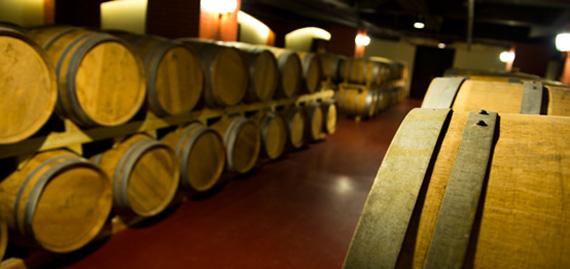Practical Tips
Storing wines

So you bought some wine that you are not planning on drinking right away. Now what do you do with it? First off, it is useful to remember that only a small percentage of fine wines on the market benefit from long-term aging. Most wines are best enjoyed within a few years of release. If you are looking to buy wines to mature, you should really consider investing in professional-grade storage.
For everyone else, however, following a few simple guidelines should keep your wines safe until you are ready to drink them.
1. Keep it cool
Heat is enemy number one for wine. Temperatures higher than 20°C will age a wine more quickly than is usually desirable. And if it gets too much hotter, your wine may get ‘cooked’, resulting in flat aromas and flavours. The ideal temperature range is between 7–18°C (and 13°C is often cited as close to perfect), though this is not an exact science. Do not fret too much if your storage runs a couple degrees warmer, as long as you are opening the bottles within a few years from their release.
2. But not too cool
Keeping wines in your household refrigerator is fine for up to a couple months, but not a good bet for the longer term. The average fridge temperature falls well below 7°C to safely store perishable foods, and the lack of moisture could eventually dry out corks, which might allow air to seep into the bottles and damage the wine. Also, do not keep your wine somewhere it could freeze. If the liquid starts turning to ice, it could expand enough to push the cork out.
3. Steady as she goes
More important than worrying about achieving a perfect 13°C is avoiding the landmines of rapid, extreme or frequent temperature swings. On top of cooked flavours, the expansion and contraction of the liquid inside the bottle might push the cork out or cause seepage. Aim for consistency, but do not get paranoid about minor temperature fluctuations; wines may see worse in transit from the winery to the store. (Even if heat has caused wine to seep out past the cork, that does not always mean the wine is ruined. There is no way to know until you open it – it could still be delicious.)
4. Turn the lights off
Light, especially sunlight, can pose a potential problem for long-term storage. The sun’s UV rays can degrade and prematurely age wine. One of the reasons why vintners use coloured glass bottles? They are like sunglasses for wine. Light from household bulbs probably will not damage the wine itself, but can fade your labels in the long run. Incandescent bulbs may be a bit safer than fluorescent bulbs, which do emit very small amounts of ultraviolet light.
5. Do not sweat the humidity
Conventional wisdom says that wines should be stored at an ideal humidity level of 70%. The theory goes that dry air will dry out the corks, which would let air into the bottle and spoil the wine. Yes, this does happen, but unless you live in a desert or in arctic conditions, it probably will not happen to you. Anywhere between 50–80% humidity is considered safe, and placing a pan of water in your storage area can improve conditions. Conversely, extremely damp conditions can promote mold. This will not affect a properly sealed wine, but can damage the labels. A dehumidifier can fix that.
6. See things sideways
Traditionally, bottles have been stored on their sides in order to keep the liquid up against the cork, which theoretically should keep the cork from drying out. If you are planning on drinking these bottles in the near- to mid-term, or if the bottles have alternative closures (screw caps, glass or plastic corks), this is not necessary. However, horizontal racking is a space-efficient way to store your bottles, and it definitely cannot harm your wines.
7. Not a whole lot of shaking
There are theories that vibration could damage wine in the long term by speeding up the chemical reactions in the liquid. Significant vibrations could possibly disturb the sediment in older wines and keep them from settling, potentially making them unpleasantly gritty. Unless you live above a train station or are hosting rock concerts, vibrations should not be a problem. Still, do not shake your bottles.
So where should I keep my bottles?
If you have not been blessed with a cool, not-too-damp basement that can double as a cellar, you can improvise with some simple racks in a safe place. Rule out your kitchen, laundry room or boiler room, where hot temperatures could affect your wines, and look for a location not directly in line with light pouring in from a window. You could also buy a small wine cooler and follow the same guidelines.
Perhaps there is a little-used closet or other vacant storage area that could be repurposed for storing wine? If you have a suitable dark, stable space that is not too damp or dry, but if it is too warm, you might consider investing in a standalone cooling unit specifically designed for wine. There are some inexpensive systems for small spaces, but in most cases, this is getting into professional wine storage.
Wine coolers are, at their most basic, standalone units designed to maintain a consistent temperature – sometimes one suitable for serving rather than long-term storage – whereas a wine cellar is a cabinet or an entire room that stores wine in optimal conditions for long-term aging.




